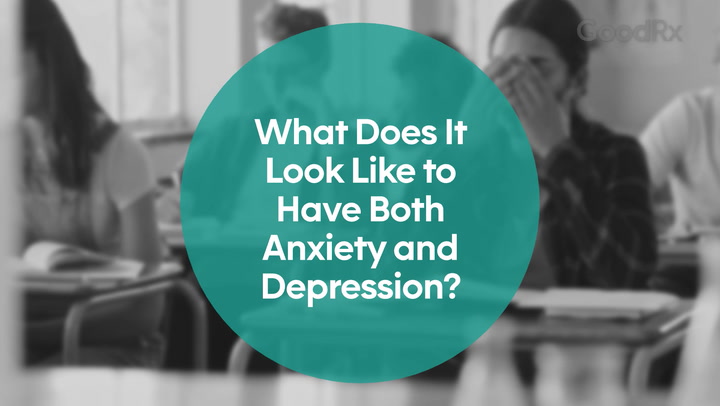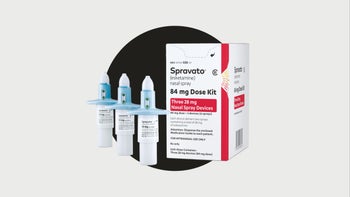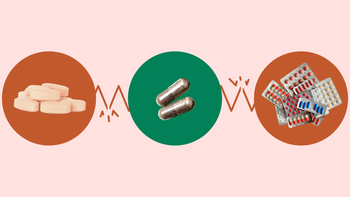
Passive Suicidal Ideation: Why You Need to Take This Suicide Warning Sign Seriously
Key takeaways:
Passive suicidal ideation is when someone wishes they were dead or has thoughts about killing themselves without making a direct plan.
Despite its “passive” nature, you should take this type of suicidal ideation seriously.
If you or a loved one experiences passive suicidal ideation, it’s important to talk about it. There’s no shame in having suicidal thoughts, and there are resources that can help.
Table of contents

There are different ways that people experience suicidal ideation, or thoughts about killing themselves. People with passive suicidal ideation might have thoughts, wishes, or vague feelings about not wanting to be alive — but not have a specific suicide plan.
Someone might also take actions that — while not direct suicide attempts — are motivated by not caring whether they live or die. Passive suicidal ideation can vary in how intense it feels and how often it occurs.
What is passive suicidal ideation?
Passive suicidal ideation, or passive suicidality, can show up in different thoughts, feelings, and behaviors. Someone may have feelings that they no longer want to live but not have a specific suicide plan. For example, they may think, “I want to die,” or “I want to kill myself.” How these thoughts and feelings show up can be different from person to person.
Search and compare options
What are some signs of passive suicidal ideation?
The signs of passive suicidal ideation can take on different forms. Some of these signs are fairly direct or explicit, while other signs are more subtle.
Examples of indirect thoughts that someone with passive suicidal ideation might experience include:
“I hope I don’t wake up tomorrow.”
“My life has no purpose.”
“I want everything to stop.”
“I don’t want to be here anymore.”
Someone with passive suicidal ideation may fantasize or frequently think about death and dying. This can include imagining themselves dying in ways other than directly killing themselves. For example, they might imagine getting into a car accident or a plane crash.
Passive suicidal ideation can also cause people to take actions that suggest they don’t care about their safety and well-being. This can look like engaging in risky behaviors or neglecting their basic needs, like intentionally:
Not wearing a seatbelt when driving or driving recklessly
Misusing drugs or alcohol
Intentionally putting themselves in unsafe situations (for example, going for a walk at night in an unsafe area)
Not following a treatment plan for a health condition (for example, a person with diabetes not taking their prescribed insulin)
Suicide prevention resources: Suicide is a main cause of death, but it’s preventable. Here’s a guide to suicide hotlines and prevention resources.
What to say to someone who talks about suicide: A clinical psychologist shares how to help someone who has suicidal thoughts.
Having thoughts about death? It’s normal to think about death every now and then. But for some people, the thoughts can get overwhelming. Here are resources to help.
Passive suicidal ideation vs. active suicidal ideation
People with passive suicidal ideation think about suicide or wish they weren’t alive. But those with active suicidal ideation have suicidal thoughts along with a specific plan. This means they:
Might know the specific method they would use to kill themselves
Have access to that method or a plan to access it
Might even have chosen a time or date for when they plan to attempt suicide
People with active suicidal ideation need emergency care because they may be in imminent danger of taking actions to kill themselves. Someone with passive suicidal ideation also needs support and to be taken seriously. Otherwise, it may worsen and become active.
Read more like this
Explore these related articles, suggested for readers like you.
What can cause passive suicidal ideation?
The causes of suicidal ideation are complex. There’s almost always more than one factor involved.
Mental health conditions
Living with a mental health condition, like major depression, can increase your risk of experiencing passive suicidal ideation. Depression can decrease your motivation to do things that give you joy. It can also lead to negative consequences, like job loss and relationship challenges. These consequences add additional stress and decrease social support.
Challenging life circumstances
Challenging life circumstances can put you at risk of having passive suicidal thoughts. Examples include:
Financial trouble
Difficult legal situations
Serious medical illness
Loss of a job
Relationship breakups
Death of a loved one
Traumatic events
In general, experiencing trauma puts someone at higher risk of having suicidal thoughts. Specifically, childhood trauma, or early-life adversity, is a long-term risk factor for suicidal behavior. People who survive childhood trauma may struggle with self-esteem and experience negative self-talk. These are both connected to suicidal ideation.
Discrimination or not feeling accepted
Being part of certain marginalized communities can be associated with passive suicidal ideation. For example, those in the LGBTQIA+ community or those who experience racial trauma may experience suicidal ideation.
Why you should take passive suicidal ideation seriously
Someone with passive suicidal ideation is still at risk of attempting suicide. Passive suicidal ideation is considered a top risk factor for attempting suicide. Suicidal thoughts can vary and come and go. So, it can be hard to predict when someone’s passive suicidal thoughts will increase in intensity.
Someone experiencing passive suicidal ideation may engage in risky behaviors. This can put them at risk for injury or even death if they’re putting themselves in danger or neglecting their health.
There’s no definitive screening test to figure out if someone’s passive suicidal thoughts will become active. But there are different suicidal ideation scales that healthcare professionals can use to understand how to best address the situation. And there are lots of resources that can help.
Is passive suicidal ideation normal?
Millions of people experience suicidal thoughts at some point in their life. And suicide is a leading cause of death in the U.S. If you experience suicidal ideation, know that you’re not alone. And remember that it’s important to take such thoughts seriously and get the help you need.
Similarly, it’s normal to think about death. After all, death is a fact of life, and it affects everyone. If your thoughts about death are frequent or overwhelming, know that there are treatments and resources available.
What to do if you or a loved one is experiencing passive suicidal ideation
If you’re concerned that you or a loved one may have passive suicidal thoughts, there are ways to take action.
Take the shame out of suicidal thoughts
If you or a loved one has passive suicidal thoughts, it’s important to remember that those thoughts are expressions of pain. They don’t make you or your loved one “bad” or “abnormal.” And people with passive suicidal thoughts deserve support and a nonjudgmental space to talk about their thoughts and feelings.
Don’t be afraid to ask about suicide directly
If someone you love says they wish they were dead or takes action to put their life in danger, ask them directly if they have thoughts about suicide.
Asking and talking about it won’t increase the likelihood that their suicidal thoughts will intensify. In fact, your loved one may even feel relieved that they don’t have to struggle alone.
Make a safety plan
A suicide safety plan can help people with suicidal ideation, including those with passive thoughts about suicide. A safety plan is a reference you can quickly turn to when experiencing suicidal ideation or emotional distress.
Here are some examples of what to put in a suicide safety plan:
Numbers and addresses of people you trust
A list of go-to coping mechanisms
Distractions (like a favorite video or song)
Phone numbers for mental health crisis resources
Access professional mental healthcare
Even if it doesn’t seem like someone with passive suicidal ideation is in immediate danger, suicidal thoughts are still a long-term risk factor for suicidal behavior. So seek support from a therapist or other licensed mental healthcare professional.
Meeting with a mental health professional can help you understand why you may be experiencing passive suicidal thoughts. It can also help your mental health in the long run.
Frequently asked questions
The 988 Suicide and Crisis Lifeline offers free, 24/7 support to people experiencing emotional distress. They also provide resources to assist in preventing and managing crises. If you or a loved one is experiencing suicidal thoughts, you can call or text 988 to get support, in both English and Spanish.
Suicide is preventable. That doesn't mean you can always prevent suicidal thoughts. But you can help create a culture where people feel safe and supported. Knowing how to recognize the signs of suicidal ideation and where to go for help are important pieces in suicide prevention.
The bottom line
Millions of people in the U.S. experience suicidal thoughts every year. People who experience passive suicidal ideation have thoughts about wanting to die, but they don’t necessarily have a direct suicide plan. Remember that all suicidal thoughts should be taken seriously.
Suicide is a leading cause of death, but it’s preventable. From making a safety plan to talking to a mental health professional and opening up to a loved one, support is available for passive suicidal ideation.
Why trust our experts?



If you or someone you know is having thoughts of suicide, you’re not alone, and help is available. Call the National Suicide Prevention Lifeline at 988, or text HOME to 741-741 to reach the Crisis Text Line.
References
Centers for Disease Control and Prevention. (2024). Facts about suicide.
Centers for Disease Control and Prevention. (2024). Risk and protective factors for suicide.
Dazzi, T., et al. (2014). Does asking about suicide and related behaviors induce suicidal ideation? What is the evidence? Psychological Medicine.
Fehling, K. B., et al. (2021). Suicide in DSM-5: Current evidence for the proposed suicide behavior disorder and other possible improvements. Frontiers in Psychiatry.
Harmer, B., et al. (2022). Suicidal ideation. StatPearls.
Liu, R. T., et al. (2020). Characterizing the phenomenology of passive suicidal ideation: A meta-analysis of its prevalence, psychiatric comorbidity, correlates, and comparisons with active suicidal ideation. Psychological Medicine.
National Institute of Mental Health. (2023). Suicide prevention.
Reid-Russell, A., et al. (2021). Lower implicit self-esteem as a pathway linking childhood abuse to depression and suicidal ideation. Development and Psychopathology.
Substance Abuse and Mental Health Services Administration. (2021). Key substance use and mental health indicators in the United States: Results from the 2020 National Survey on Drug Use and Health. U.S. Department of Health and Human Services Publication.
For additional resources or to connect with mental health services in your area, call SAMHSA’s National Helpline at 1-800-662-4357. For immediate assistance, call the National Suicide Prevention Lifeline at 988, or text HOME to 741-741 to reach the Crisis Text Line.


























